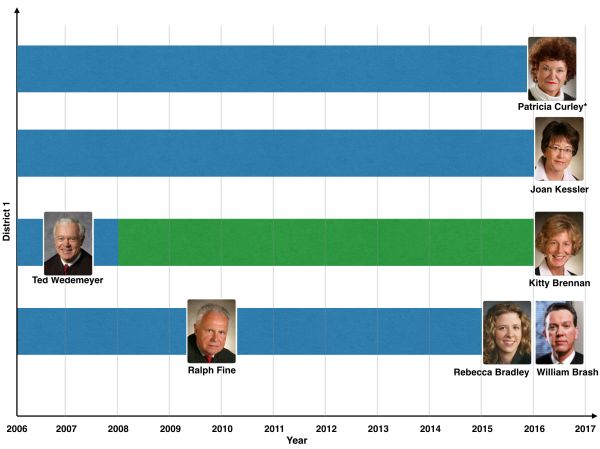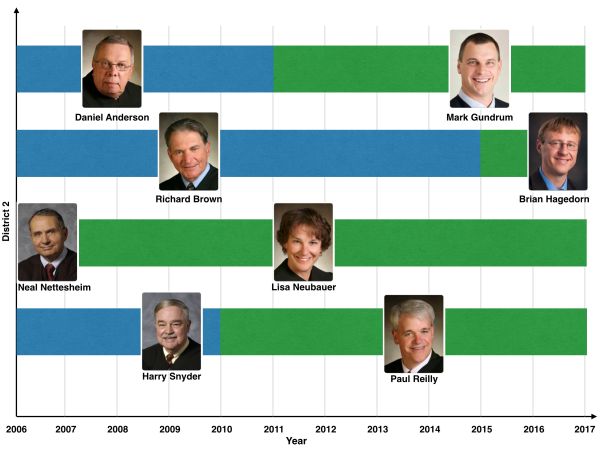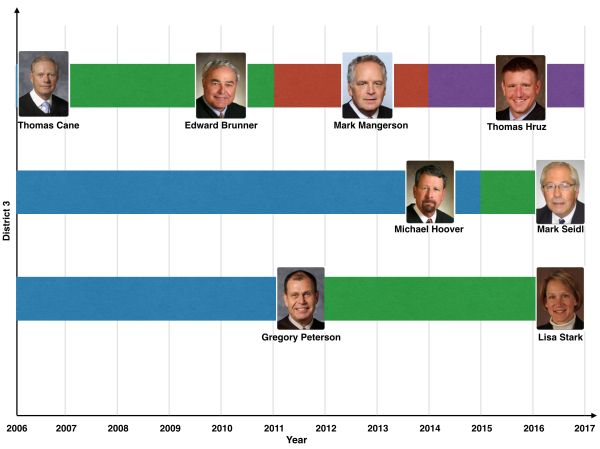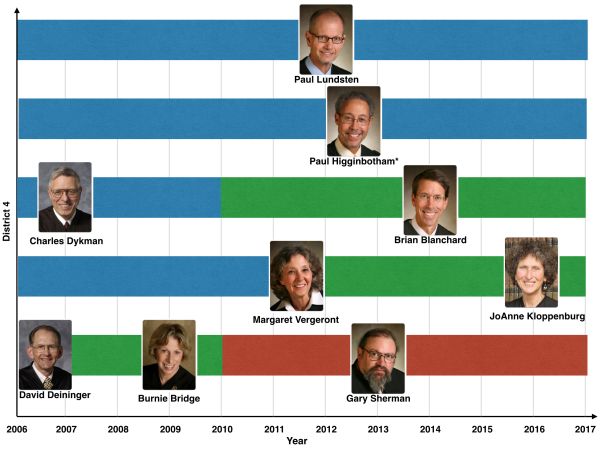Bill Gates once wrote that "[w]e always overestimate the change that will occur in the next two years and underestimate the change that will occur in the next ten." Mr. Gates surely wasn't thinking about the turnover of judges on Wisconsin's Court of Appeals when he wrote that, but a review of the court's membership over the last 10 years illustrates his point superbly.
We began to think about how much change has occurred in Wisconsin's intermediate appellate court in the last decade with the announcements that Judge Patricia Curley (District 1) will retire later this month and that Judge Paul Higginbotham (District 4) will not run for re-election in the spring. The Governor has appointed Milwaukee County Circuit Judge Timothy Dugan to replace Judge Curley; Judge Higginbotham's replacement will take office August 1 (Rock County Circuit Judge Michael Fitzpatrick is the only announced candidate for the position).
We did a little more digging, and the results surprised us. While we expected to find some change, perhaps even substantial change, we did not expect to find that the turnover has been nearly total.
Aside from Judges Curley and Higginbotham, only two of Wisconsin's 16 sitting court-of-appeals judges were on that court ten years ago. The two are Judges Joan Kessler (District 1) and Paul Lundsten (District 4). The remaining 12 judges on the court have all taken their oaths of office within the last 10 years.
Here is a summary by district of the changes in the last decade.
District 1

After Judge Curley retires, Judge Kessler will be the only judge left on the four-judge District 1 who has served continuously for the last 10 years. Judge Ted Wedemeyer, Jr. died in 2008, and Judge Kitty Brennan was appointed to fill his seat. Judge Ralph Adam Fine died in December 2014 and was replaced by Judge (now Justice) Rebecca Bradley; she was appointed to Wisconsin's Supreme Court in 2015. Judge William Brash was appointed to fill the seat vacated by Justice Bradley.
District 2

District 2, which also has four judges, has an entirely new crop after the retirements of all those sitting in 2006. Judge Richard Brown retired in 2015, having served continuously since 1978; he was the only one of the court's 12 original judges still sitting. Judge Brian Hagedorn was appointed to fill the vacancy left by Judge Brown. Judge Paul Reilly filled the seat vacated by Judge Harry Snyder in 2010, and Judge Mark Gundrum filled the seat vacated by Judge Daniel Anderson in 2011. Judge Neal Nettesheim left the bench in 2007, after serving since 1983, and Judge Lisa Neubauer, now the Chief Judge of the Court of Appeals, took his place.
District 3

The turnover since 2006 on District 3, like District 2, has been total. Judge Thomas Cane retired in 2007, and his seat has been filled since by Judges Edward Brunner and Mark Mangerson, both former circuit judges who served on the court of appeals only briefly before retiring. Judge Thomas Hruz has filled the seat since his appointment in 2014. Judges Lisa Stark and Mark Seidl have filled the seats vacated by retiring Judges Michael Hoover and Gregory Peterson, respectively, since 2013 and 2015.
District 4

Other than Judge Higginbotham, Judge Paul Lundsten is the only judge on the five-judge District 4 to have served the entire decade from 2006-16. Judges Charles Dykman, Margaret Vergeront, and David Deininger, all on the court in 2006, have since left by retirement, replaced by Judges Brian Blanchard, elected in 2010; JoAnne Kloppenburg, elected in 2012; and Burnie Bridge, who was appointed in 2007 but resigned in 2009. Judge Bridge was replaced by Judge Gary Sherman, appointed in 2010.
* * * * *
Our observation shouldn't be read to suggest that Wisconsin's appellate bench lacks experience or credentials. Most of the current judges on the court of appeals came to that court with many years of experience on the trial bench, in private practice, or in government service. Indeed, newly appointed Judge Dugan has already served on the circuit court for 24 years.
Our point is the same one that we understand Mr. Gates to have been making: that 10 years is time enough for significant change and that, when viewed in hindsight, the extent of that change is more (considerably more, we'd venture to guess in this case) than most would have predicted 10 years ago.
The content of this article is intended to provide a general guide to the subject matter. Specialist advice should be sought about your specific circumstances.

